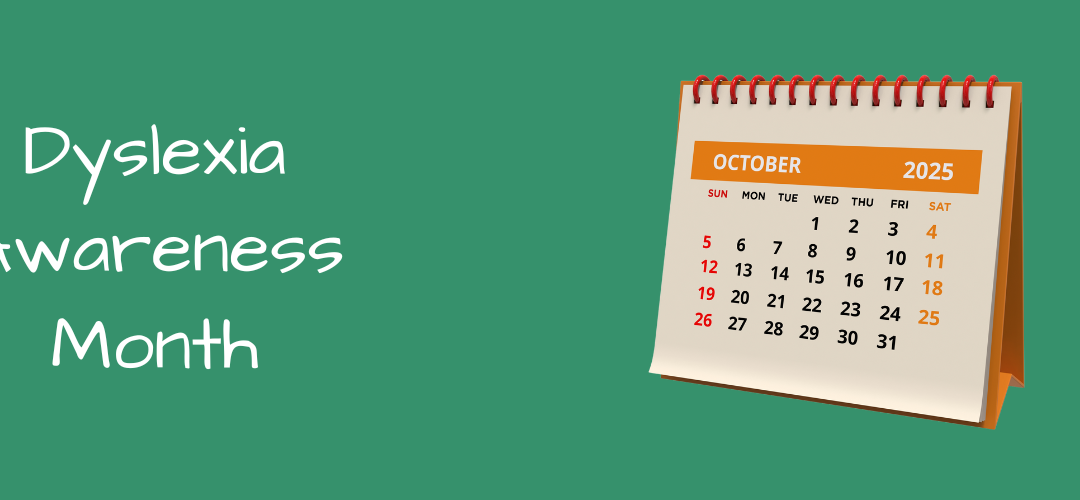Every October, people around the world come together to recognize Dyslexia Awareness Month—a time dedicated to raising awareness, breaking down harmful myths, and advocating for individuals with dyslexia. It is both a celebration of the strengths within the dyslexic community and a reminder of the ongoing challenges that must be addressed to ensure equity in education and opportunity.
While there is no universal agreement on the exact origins of this movement, formal recognition can be traced back to 2002, when both the U.S. and the U.K. began designating October as National Dyslexia Awareness Month. Since then, advocacy groups like the International Dyslexia Association and the British Dyslexia Association have played a vital role in driving forward the message of awareness, inclusion, and early support. Their leadership helped lay the foundation for what has since become a global movement.
Building on these efforts, the European Dyslexia Association declared the first week of October as European Dyslexia Awareness Week in 2010. In recent years, a growing number of countries and organizations have worked to highlight October 8th as International Dyslexia Awareness Day. Around the world, communities mark this day with symbolic colors—some countries using teal, others red—to bring visibility to dyslexia. These efforts, though varied, are united by a common goal: to shine a light on dyslexia and create meaningful change in how it is understood and supported.
These kinds of awareness campaigns have made enormous strides for individuals with dyslexia everywhere. When I was growing up in the 1990s, dyslexia was rarely spoken about openly, and it certainly wasn’t something people advertised. Conversations about learning differences were often clouded by stigma and silence. I wish the level of awareness and acceptance we see today had existed back then. At the same time, I feel it’s important to recognize that there is still so much work to do. Too many people continue to face unnecessary barriers, and there is still a significant degree of privilege tied to receiving a proper dyslexia diagnosis and support.
My own journey in advocacy began more than 30 years ago. It started simply—fighting to ensure the school I attended, which specialized in dyslexia, kept its bus system so students like me could continue accessing education. From there, I moved on to sharing my story in documentaries, speaking with other students about their experiences, and gradually stepping into larger advocacy roles. After graduating high school, I didn’t stop. I found new ways to contribute, eventually choosing a career that allowed me to support those with dyslexia and other neurodiverse profiles on a professional level.
Through Garforth Education, I’ve been able to expand that advocacy further. Over the years, I’ve run multiple social media campaigns dedicated to raising awareness—producing blog posts, creating “Myth Buster” videos, and interviewing leading experts in the field with recordings available on YouTube. Each of these projects has been aimed at amplifying understanding and giving families, educators, and individuals with dyslexia the tools and knowledge they need.
This year, I plan on doing things a bit differently. While I will revisit some of my favorite content from past years, my main focus will be on the Right to Read Initiative Podcast, which I host, and a series of blog posts that explore what I call the “Darker Side of Dyslexia.” An online search will quickly reveal hundreds, if not thousands, of posts about the so-called “gift of dyslexia” or narratives describing dyslexia as a “superpower.” While I understand and respect the intention behind these positive framings, I believe it is equally important to talk about the realities that are too often hidden in the shadows.
There are many difficult aspects of dyslexia—frustrations, struggles, and long-lasting impacts—that deserve acknowledgment. My decision to highlight these challenges this year comes from a desire to foster honest dialogue. The uplifting, feel-good content is readily available for those seeking inspiration, and it absolutely has value. But we also need to engage in the harder conversations about what dyslexia can mean for individuals and families in real life.
I want to make it clear to you, the reader, that while I—Dr. Kathryn Garforth—am dyslexic and proud, I also firmly believe that no one should have to suffer the way I did, or the way many others still do. I’d like to think the pain and stigma were left behind in the last century, but unfortunately, that isn’t true. Too many of my clients today continue to face the same challenges I endured decades ago.
Even in my own family, with two of my children diagnosed with dyslexia, I see how these barriers still exist. They will be fine because they have me—an advocate, a guide, and someone who understands firsthand—but that doesn’t mean they should have to fight so hard. Every child and adult with dyslexia deserves the same opportunities for success, regardless of whether they have access to someone with specialized knowledge in their corner.
As we move through this October, my hope is that Dyslexia Awareness Month continues to grow—not just in visibility, but in action. Awareness is the first step, but meaningful change requires sustained commitment, honest dialogue, and advocacy that goes beyond celebration to tackle the systemic issues head-on. Together, we can create a future where no one with dyslexia is left to struggle in silence.
*Please note that among other things, October is also the Awareness Month for Autism, ADHD and Down Syndrome. Awareness for these neuro diversities is just as important as Dyslexia and other Learning Disabilities and will be highlighted at different points of this month too!

